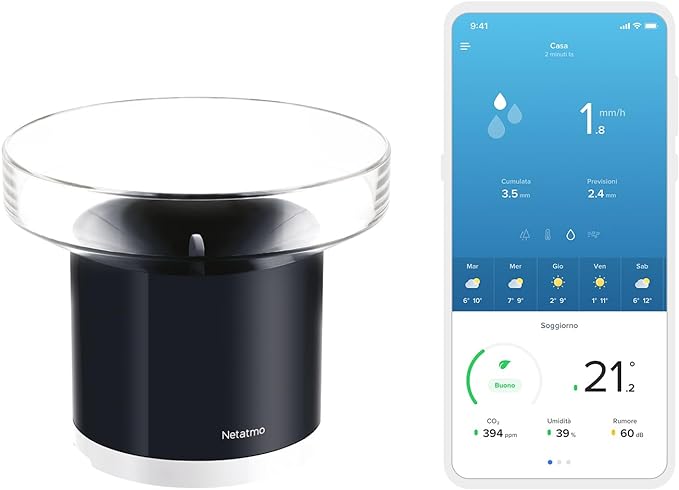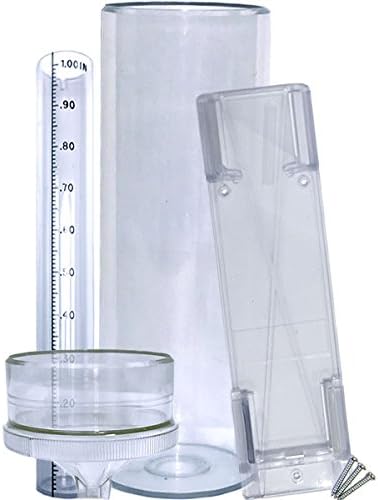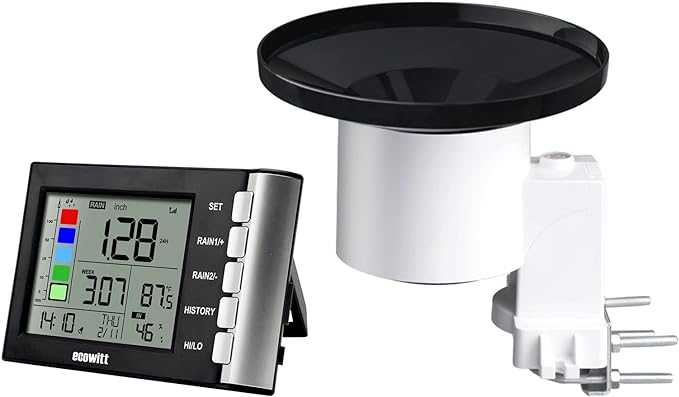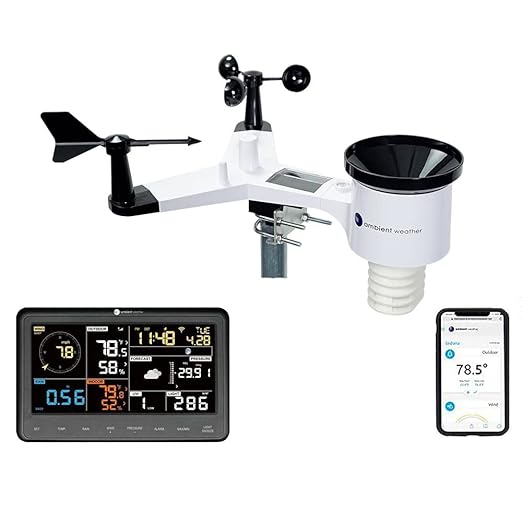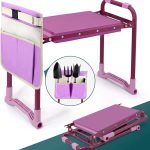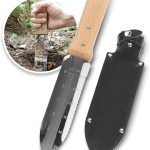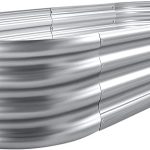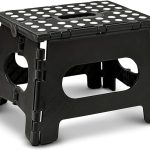As you step into your backyard, you can’t help but wonder how much rain has fallen overnight. You’re not alone – many homeowners and gardeners rely on accurate rain measurements to make informed decisions about their outdoor spaces. But with so many rain gauges on the market, it can be tough to know which one to choose. You’re about to discover the top-rated rain gauges of 2025, from high-end professional devices to affordable options for everyday use. But which one will provide the precision and reliability you need?
Contents
- Headwind EZRead 26″ Giant Professional Outdoor Rain Gauge
- Netatmo Weather Station Rain Gauge
- Stratus Precision Rain Gauge with Mounting Bracket (14 All Weather)
- AcuRite Wireless Digital Rain Gauge
- ECOWITT Wireless Rain Gauge Weather Station
- Ambient Weather WS-2902 WiFi Smart Weather Station
- AcuRite Magnifying Rain Gauge
- Factors to Consider When Choosing Rain Gauges
- Frequently Asked Questions
- Conclusion
Headwind EZRead 26″ Giant Professional Outdoor Rain Gauge
If you’re a serious weather enthusiast or professional looking for a reliable and accurate rain gauge, the Headwind EZRead 26′ Giant Professional Outdoor Rain Gauge is a top choice, thanks to its oversized tube and unique funnel design that facilitates easy reading and prevents debris from entering the tube.
You’ll appreciate the high-visibility float and water level magnification that facilitates accurate readings.
Plus, the gauge is easy to install and maintain, with a sieve filter to keep out debris.
The large tube and numerals make it easy to read from a distance, even for people with vision impairments.
With its weatherproof and decorative design, this gauge is a great addition to your outdoor space.
Best For: Weather enthusiasts, professionals, and individuals with vision impairments who need an accurate and easy-to-read rain gauge.
Pros:
- Easy to read from a distance, even for people with vision impairments
- Unique funnel design prevents debris from entering the tube, ensuring accurate measurements
- Easy to install and maintain, with a sieve filter to keep out debris
Cons:
- May require removal and storage during freezing weather to prevent cracking
- Some users may find the measurements to be limited, with suggestions for including centimeters or millimeters for international users
- The collection cup may be knocked off during strong winds or hail storms
Netatmo Weather Station Rain Gauge
The Netatmo Weather Station Rain Gauge is an ideal choice for homeowners who want to stay on top of precipitation patterns without having to constantly check the device.
With its wireless connectivity and ability to send rainfall alerts directly to your smartphone, you can stay informed about precipitation patterns.
You can place this battery-powered, wireless device up to 100 meters from the Weather Station’s indoor module, and it’ll still provide you with accurate rainfall data.
Made of plastic, this modern, brushed-finish rain gauge measures 5.12 x 4.33 x 5.12 inches and weighs 206 grams.
It’s easy to install, and you can sync it with the Netatmo Weather Station through their website.
Just remember to calibrate it correctly using a spray bottle to simulate rainfall for accurate readings.
Best For: Homeowners who want to monitor rainfall patterns and receive alerts on their smartphones.
Pros:
- Accurate rainfall measurements and alerts sent directly to your smartphone
- Easy to install and sync with the Netatmo Weather Station
- Can be placed up to 100 meters from the Weather Station’s indoor module
Cons:
- Requires correct calibration to ensure accurate readings
- Some customers have reported difficulties with the warranty process
- Battery life may vary depending on usage and weather conditions
Stratus Precision Rain Gauge with Mounting Bracket (14 All Weather)
The Stratus Precision Rain Gauge with Mounting Bracket offers exceptional accuracy, measuring rainfall to 1/100th of an inch, making it an ideal choice for serious weather enthusiasts and professionals seeking reliable data.
Built to US Weather Bureau standards, this gauge is constructed of heavy-duty, UV-resistant polycarbonate, ensuring it can withstand rough weather and full sun.
The Quick Connect bracket makes installation a breeze.
You’ll easily measure rainfall in increments of 0.01 inches up to 1 inch, and the outer cylinder can hold additional rainfall up to 11 inches.
While some users find it inconvenient to measure multiple inches of rain, the gauge’s accuracy and durability make it a top choice for those seeking reliable data.
Best For: Serious weather enthusiasts and professionals seeking reliable data.
Pros:
- Exceptional accuracy, measuring rainfall to 1/100th of an inch
- Built to US Weather Bureau standards and constructed of heavy-duty, UV-resistant polycarbonate
- Easy to install with the exclusive Quick Connect bracket
Cons:
- Measuring rainfall over 1 inch can be inconvenient, requiring multiple fillings of the measuring tube
- The slit in the top of the measuring tube can cause water to flow out, making measurements over 1 inch less accurate
- Some users reported the plastic starting to degrade and weaken after 5+ years
AcuRite Wireless Digital Rain Gauge
Accuracy enthusiasts will appreciate the AcuRite Wireless Digital Rain Gauge, which measures rain precipitation in inches or millimeters with rainfall history, making it an ideal choice for those seeking precise and thorough weather tracking.
You’ll appreciate the programmable rain alarm, self-emptying rain collector, and strong wireless signal penetration that comes with this device.
The digital display console shows the current date and time, and you can track rainfall history, including current rainfall events in one or seven-day measurements.
With a one-year limited manufacturer warranty and over 4,700 customer reviews with an average 4.3-star rating, you can trust this product’s accuracy and reliability.
Best For: Weather enthusiasts, outdoor enthusiasts, and homeowners who want to track rainfall and stay informed about weather conditions.
Pros:
- Offers accurate and thorough weather tracking with rainfall history and programmable rain alarms
- Features a self-emptying rain collector and strong wireless signal penetration for convenient use
- Has a digital display console showing current date and time, and tracks rainfall history in one or seven-day measurements
Cons:
- Requires occasional cleaning and battery replacement, which can be inconvenient for some users
- May not be suitable for areas with extremely heavy rainfall, as the self-emptying collector may not be able to keep up
- Some users may find the product’s design or material to be less durable than expected
ECOWITT Wireless Rain Gauge Weather Station
The ECOWITT Wireless Rain Gauge Weather Station is an excellent choice for those seeking a high-precision rain gauge that also tracks indoor temperature and humidity.
It boasts a 0.1mm/0.01inch resolution and 300FT/100M wireless transmission range.
You’ll appreciate its professional rainfall data, which includes:
• rain rate
• rain event
• rainfall totals for various time periods
• 24-month rain history
Plus, the programmable rain alarm lets you customize alerts for:
• rain rate
• rain event
• indoor temperature
• humidity
The self-emptying rain collector is easy to install and maintain, and the wall-mountable display base station features a built-in table stand and back light.
With its modern design and multi-colored display, this rain gauge is a great addition to your home or garden.
Best For: Homeowners, gardeners, and weather enthusiasts who want to monitor rain precipitation, indoor temperature, and humidity with high precision and accuracy.
Pros:
- High-precision rain gauge with 0.1mm/0.01inch resolution and 300FT/100M wireless transmission range
- Professional rainfall data with customizable alerts for rain rate, rain event, indoor temperature, and humidity
- Self-emptying rain collector and wall-mountable display base station with built-in table stand and back light
Cons:
- Some customers reported inaccurate rainfall readings
- One customer experienced a faulty unit that stopped working after 5 months
- Another customer had issues with the display and data transmission
Ambient Weather WS-2902 WiFi Smart Weather Station
For homeowners seeking a thorough and connected weather monitoring system, the Ambient Weather WS-2902 WiFi Smart Weather Station stands out as a top choice, offering a complete suite of features that deliver hyper-local data on wind speed, temperature, humidity, rainfall, and more.
You’ll appreciate its smart home readiness, compatible with IFTT, Google Home, and Alexa, making it easy to integrate into your existing setup.
The station’s enhanced Wi-Fi capabilities allow for seamless data transmission to the Ambient Weather Network, providing you with real-time updates.
With its Osprey Sensor Array and brilliant LCD color display, you’ll have access to accurate and detailed weather information at your fingertips.
Best For: Homeowners seeking a comprehensive and connected weather monitoring system that can integrate with their smart home setup.
Pros:
- Easy to set up and read
- Great price point
- Easy to connect to Ambientweather.net
Cons:
- May have issues with mounting
- Wind gauge may not read over 99.9 mph
- May have connectivity issues
AcuRite Magnifying Rain Gauge
The AcuRite Magnifying Rain Gauge features durable, weather-resistant acrylic construction, making it an ideal choice for outdoor use in your garden, lawn, or yard.
This gauge can measure up to 5 inches of rainwater, and its magnified numbers make it easy to read.
The integrated hang hole allows for easy mounting or staking into the ground, giving you flexibility in placement.
With its jumbo size and precision, you’ll get accurate readings every time.
The gauge is wireless and weather-resistant, making it suitable for outdoor use.
The white numbers and inch markings are easy to read, and the blue color adds a touch of style to your outdoor space.
Best For: Outdoor enthusiasts, gardeners, and homeowners who want to accurately measure rainfall in their gardens, lawns, or yards.
Pros:
- Durable and weather-resistant construction makes it suitable for outdoor use
- Easy-to-read magnified numbers and inch markings provide accurate rainfall measurements
- Wireless and compact design makes it easy to install and move around
Cons:
- Requires careful handling to avoid breakage
- No additional features beyond rainfall measurement
- Some users may find the design or color to be less aesthetically pleasing
Factors to Consider When Choosing Rain Gauges
When choosing a rain gauge, you’ll want to guarantee several key factors to obtain the most accurate and reliable data.
You’ll need to ponder the gauge’s accuracy, how well it’s built to withstand the elements, and how easy it’s to install and read.
Rain Gauge Accuracy
Choosing the right rain gauge depends on understanding the factors that impact its accuracy, including the size and shape of the gauge, the material it’s made of, and how well it’s calibrated.
You want a gauge that can measure rainfall with an accuracy of ±1-2% over a range of rainfall intensities, from light drizzles to heavy downpours. To achieve this level of precision, calibration is key.
The American Meteorological Society recommends regular calibration to verify accuracy, as temperature, humidity, and other environmental factors can affect readings.
When selecting a rain gauge, look for one that can provide accurate readings, ideally to 1/100th of an inch.
If you’re using the gauge for scientific research or forecasting, you may need an even higher level of accuracy, such as ±0.01 inches or better.
Proper installation is also vital; make sure to place your gauge in an open area, away from buildings, trees, and other obstacles that could interfere with rainfall collection.
Durability and Build
Once you’ve verified your rain gauge is accurate, consider its durability and build, as a well-constructed gauge can withstand harsh outdoor conditions and provide reliable readings over an extended period.
You want a gauge made of weather-resistant materials like plastic or acrylic to minimize maintenance.
A sturdy and stable design is essential to prevent the gauge from being easily knocked over or damaged by strong winds or debris.
The funnel and measuring tube should be designed to minimize clogging, ensuring accurate readings even in heavy rainfall or strong winds.
A durable rain gauge should last for 10 years or more with minimal maintenance, providing accurate and reliable rainfall data over an extended period.
Look for a gauge with a robust build quality that can withstand wind, rain, and extreme temperatures without compromising its accuracy or functionality.
Ease of Installation
As you prepare to set up your rain gauge, consider the importance of ease of installation, as a hassle-free setup process can make all the difference in guaranteeing accurate readings and minimizing frustration.
A complicated setup can lead to inaccurate readings and frustration, so selecting a rain gauge with a simple and intuitive installation process is crucial.
Look for rain gauges that come with a mounting bracket or stake, allowing for easy installation and placement in the desired location.
Wireless or self-emptying designs can also simplify the installation process and reduce maintenance.
When selecting a rain gauge, consider the type of mounting system required, such as a pole or stake, and verify it’s compatible with the rain gauge and the installation location.
By opting for a rain gauge with ease of installation, you’ll guarantee accurate measurements and minimize the risk of errors.
With a hassle-free setup, you can focus on enjoying the benefits of accurate rainfall tracking.
Reading and Measurement
When selecting a rain gauge, you’ll want to pay close attention to its reading and measurement capabilities, as they can substantially impact the accuracy and usefulness of your rainfall data.
Typically, rain gauges measure rainfall in increments of 0.01 inches, but some models offer more precise measurements in millimeters or centimeters. The measurement range of a rain gauge can vary, with some models capable of measuring up to 11 inches of rainfall, while others may have a more limited range.
Consider the convenience of a self-emptying collector, which allows for easy measurement and reset, or opt for a manual emptying and recalibration model.
Keep in mind that factors like wind direction, debris, and installation location can affect accuracy, so proper placement and maintenance are essential.
Some rain gauges offer additional features like rainfall history tracking, alarms, and wireless connectivity, which can enhance their functionality and user experience.
Additional Weather Data
As you choose a rain gauge, consider the type of data that will enhance your understanding of local weather patterns. Some rain gauges can measure wind speed and direction, temperature, humidity, UV index, and solar radiation, giving you a more detailed picture of the environment.
If you need to monitor weather conditions remotely, look for weather stations with Wi-Fi connectivity that can transmit data wirelessly.
As a farmer, gardener, or outdoor enthusiast, you might require hyperlocal weather data, which provides precise and localized information.
Advanced weather stations can offer more features, such as programmable rain alarms, customizable alerts, and historical data tracking. These features are ideal for users who need detailed weather insights.
Consider what additional data you need to make informed decisions about your garden, farm, or outdoor activities. By choosing a rain gauge that provides the right additional weather data, you’ll be better equipped to plan and prepare for changing weather conditions.
Maintenance and Upkeep
When considering a rain gauge, weigh the maintenance requirements, as neglecting to clean or replace worn-out parts can lead to inaccurate readings.
A gauge that’s easy to clean and maintain is vital for accurate data. Look for models with a smooth, non-stick surface that won’t harbor debris or sediment.
You’ll also want to think about the frequency of cleaning and the ease of disassembling the gauge for thorough cleaning.
Additionally, take into account the materials used in the gauge’s construction.
Durable materials like stainless steel or high-quality plastics can withstand the elements and reduce the need for frequent replacement.
Check if the gauge has any moving parts that may require lubrication or replacement over time.
Some gauges may also require calibration or adjustments, so make certain you understand the manufacturer’s instructions for maintenance.
Budget and Value
Determining your budget and understanding the value of a rain gauge is essential since it can greatly impact the quality and accuracy of the data you receive.
You can find a budget-friendly rain gauge for as little as $10, while high-end models with advanced features can range from $50 to over $200.
When evaluating value, look for a rain gauge that provides accurate readings, is durable, and easy to use. While a higher price tag doesn’t always mean a better product, investing in a reputable brand with good customer reviews can guarantee a longer lifespan and more accurate readings.
When calculating the value of a rain gauge, don’t forget to factor in the long-term costs of owning one, including maintenance, replacement parts, and battery replacements.
This will give you a more accurate picture of its overall value. If you’re looking for a good value, think about a mid-range rain gauge that balances features and affordability, such as a digital model with Wi-Fi connectivity and a reasonable price tag.
Frequently Asked Questions
Can I Use a Rain Gauge for Measuring Snowfall as Well?
You’re wondering if you can use a rain gauge for measuring snowfall too? Yes, you can, but keep in mind that snowflakes may not melt immediately, so you’ll need to let it melt or use a gauge with a built-in heater.
How Often Should I Clean My Rain Gauge for Accurate Readings?
You should clean your rain gauge regularly, ideally after each use, to guarantee accurate readings. Remove debris, dirt, and water spots to prevent measurement errors.
Are Wireless Rain Gauges More Accurate Than Wired Ones?
Silky sensor signals synchronize seamlessly in wireless rain gauges, but you’ll find wired ones provide more precise precipitation readings, as they’re less prone to interference, ensuring you receive reliable rain rate reports.
Can I Install a Rain Gauge on a Sloping Roof or Wall?
You can install a rain gauge on a sloping roof or wall, but make certain it’s securely fastened and angled correctly to allow rainwater to flow freely into the gauge, providing accurate measurements.
Do Rain Gauges Come With a Built-In Thermometer or Humidity Sensor?
As you step into the rainy morning, the droplets on your windowpane resemble a thousand tiny diamonds, but do rain gauges come equipped with a built-in thermometer or humidity sensor? Nope, you’ll need separate devices for that, but some models do offer Wi-Fi connectivity for smart tracking.
Conclusion
As you step into the world of rain gauges, remember that every drop counts.
The right gauge is like a trusted companion, guiding you through life’s unpredictable storms and sunny skies.
Choose wisely, and your garden will flourish, your home will thrive, and you’ll weather every storm with confidence.

